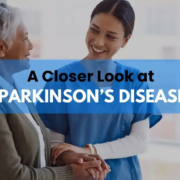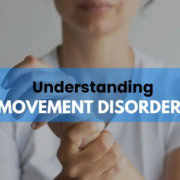A Closer Look at Parkinson’s Disease
Introduction to Parkinson’s Disease
Parkinson’s Disease is a progressive neurodegenerative disorder that primarily affects movement. It is one of the most common movement disorders, especially among older adults. As a consultant and specialist in geriatric medicine, I, Dr Ghulam Hussain Saqib, have dedicated much of my practice to diagnosing and managing Parkinson’s Disease. This blog post aims to shed light on the symptoms, causes, and treatment options for this condition.
Symptoms of Parkinson’s Disease
Parkinson’s Disease typically progresses slowly, and its symptoms can vary widely among individuals. The most common symptoms include:
– Tremors: Shaking, often starting in a hand or fingers. This usually occurs when the limb is at rest.
– Bradykinesia:** Slowness of movement, making simple tasks time-consuming and difficult.
– Rigidity: Stiffness in the muscles, which can be painful and limit the range of motion.
– Postural Instability: Balance problems and a tendency to fall.
– Other Symptoms: These may include speech changes, writing changes, loss of automatic movements (such as blinking), and a mask-like facial expression.
Causes and Risk Factors
The exact cause of Parkinson’s Disease is unknown, but several factors may contribute to its development:
– Genetic Factors: Certain genetic mutations are associated with Parkinson’s Disease.
– Environmental Factors: Exposure to toxins like pesticides and herbicides may increase the risk.
– Age: The risk of Parkinson’s Disease increases with age, particularly after age 60.
– Gender: Men are more likely to develop Parkinson’s Disease than women.
Diagnosis
Diagnosing Parkinson’s Disease involves a comprehensive medical history and neurological examination. There is no definitive test for Parkinson’s Disease, so diagnosis is based on the presence of symptoms and ruling out other conditions. Imaging tests like MRI or CT scans may be used to exclude other disorders.
Treatment Options
While there is currently no cure for Parkinson’s Disease, various treatments can help manage symptoms:
-Medications: Levodopa is the most effective medication for controlling Parkinson’s symptoms. Other drugs, such as dopamine agonists and MAO-B inhibitors, may also be used.
– Deep Brain Stimulation (DBS): A surgical procedure that implants electrodes in the brain to regulate abnormal impulses.
-Physical Therapy: Exercises to improve mobility, flexibility, and balance.
– Occupational Therapy:** Strategies to assist with daily activities and maintain independence.
-Speech Therapy: Techniques to address speech and swallowing difficulties.
Living with Parkinson’s Disease
Managing Parkinson’s Disease requires a multidisciplinary approach. Patients benefit from a combination of medical treatment, physical activity, and lifestyle adjustments. Support from healthcare professionals, family, and support groups is crucial in maintaining a good quality of life.
Conclusion
Parkinson’s Disease presents significant challenges, but with the right management strategies, patients can lead fulfilling lives. As a specialist in geriatric medicine, I am committed to providing the best possible care for those affected by this condition. If you or someone you know is experiencing symptoms of Parkinson’s Disease, seek professional medical advice to explore the available treatment options.
For more information or to schedule a consultation, please feel free to contact my practice at The Hampton Hospital, Peterborough, Cambridgeshire.


